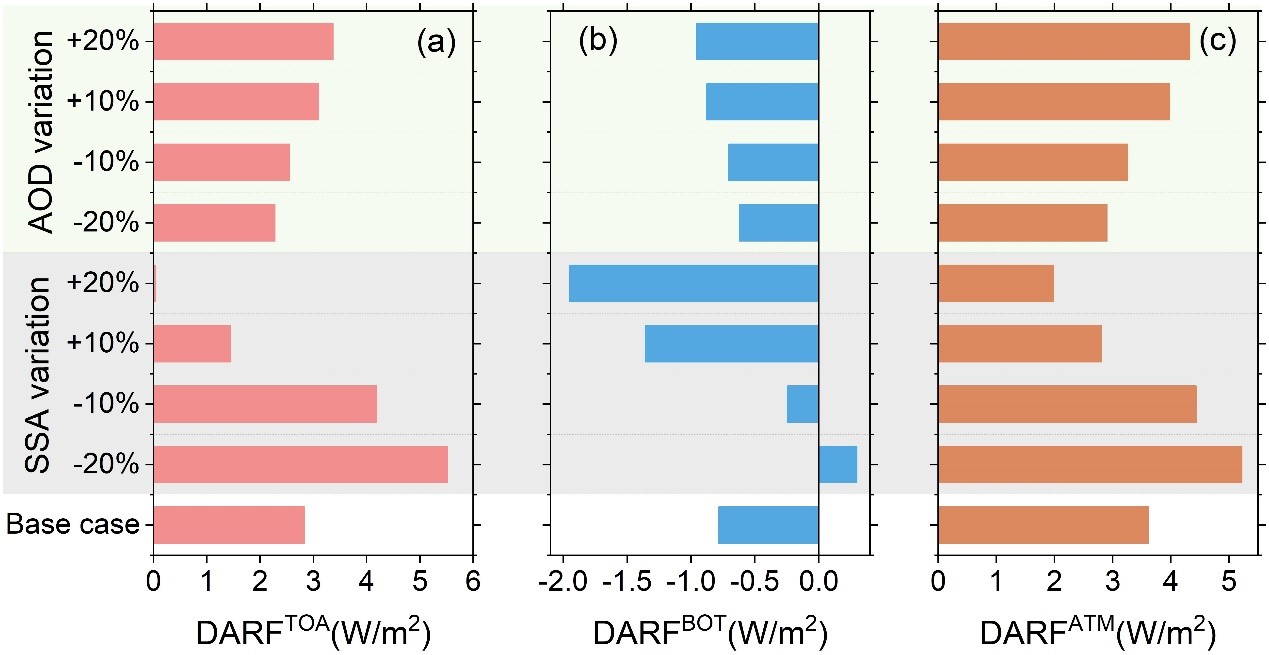
Recently, a research group led by Prof. ZHANG Weijun from Hefei Institutes of Physical Science of Chinese Academy of Sciences found that strong aerosol absorption might be a key factor causing warming over the Tibetan Plateau (TP).
The research results were published in Geophysical Research Letters.
The TP warming rate is twice higher than the global average value over the past 50 years, but it varies a lot over different areas, adding the complexity to make clear of the factors impacting TP warming. Aerosol optical properties, especially single scattering albedo (SSA), are necessary parameters calculating aerosol radiative forcing. However, observations of SSA over the TP have been limited due to technical challenges and the harsh environment.
In this study, using Cavity-Enhanced Albedometer developed by their team over Lhasa site, researchers conducted in situ measurement of aerosol extinction, scattering and absorption coefficients, as well as SSA simultaneously. Strong aerosol absorption was observed.
"Black carbon was found to be the largest contributor to aerosol absorption, followed by primary and secondary brown carbon," said Prof. ZHANG.
The strong absorption exerts positive direct aerosol radiative forcing at the top of the atmosphere during daytime, reaching 2.83 W/m2—surpassing the global mean radiative forcing of CO2 (2.16 W/m2).
The sites with strong aerosol absorption are all located in the regions with significant warming, indicating that aerosol might play a significant role on accelerating TP warming.
"This research showed the link between strong aerosol absorption and TP warming," said Wang Shuo, first author of the paper. "and reducing the fraction of absorbing aerosols might be an efficient way to mitigate TP warming."

Average DARFTOA (a), DARFBOT (b) and DARFATM (c) based on aerosol optical properties from 11:00 to 19:00 (base case), and their sensitivities to SSA (grey background) and AOD (green background) with -20%, -10%, 10% and 20% variations. (Image by WANG Shuo)